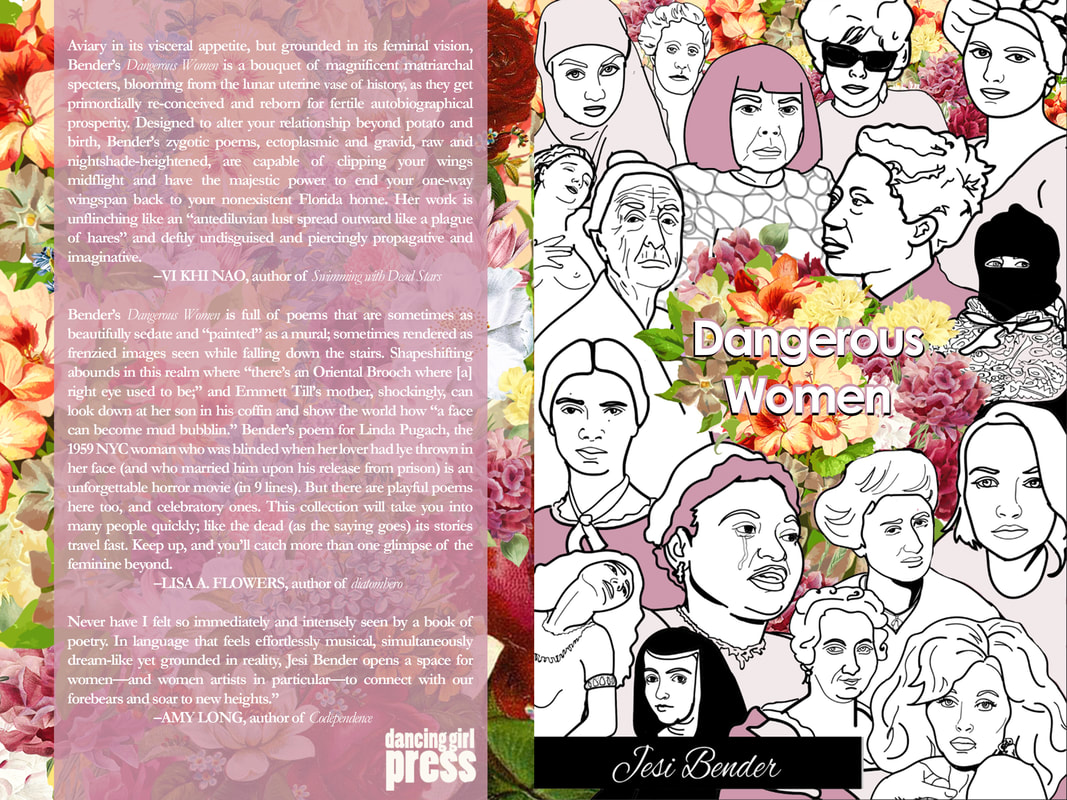|
The Breadcrumbs widget will appear here on the published site.
By Alex Carrigan When I decided that I wanted to write book reviews regularly, I decided that one of my goals as a critic would be to expose myself to more perspectives and points of view that were completely alien from my own. I felt like if I was going to write about other people's work, I would need to suspend my own experiences and my specific mindset to try and let these writers educate me and challenge me. I wanted to write about the questions I had to ask and the answers given to me from writers who weren't like me. Doing this has exposed me to some incredible writers and works, but more importantly, it made me realize how necessary it is to continually educate oneself. Jesi Bender's new poetry chapbook Dangerous Women is the most recent work to truly challenge me as a cisgender male critic, and I feel better off for that. The collection compiles poetry about women and about womanhood. More than half the poems are dedicated to various historical women, while others are more about the universal experiences of women. All of which are told through a mix of odes and prose poems that are as impactful as the women Bender writes about. Right from the very beginning of the collection, Bender illustrates that Dangerous Women will slowly reveal these women as the collection progresses in a way that makes them akin to religious or mythological figures. The table of contents names each poem, but also provides a "Threat," giving each piece a moniker like "The Powerful Woman" for Bender's poem about Salome or "The Women Together" for her poem about Georgia O'Keefe and Yayoi Kusama. But as the collection progresses, it becomes clear these aren't specific archetypes that are solely inhabited by the figures in the collection, but merely examples of womanhood that can be found anywhere. The collection is bookended by pieces that are broader than the others. The opening poem, "Womb Wounds," speaks of women from the earliest instances of the Bible, writing, We Mary, (some magdalenes) All daughters of the same black Eve She in us birthed sin We in turn cradle Its naissance in our stomachs It's fitting that the first few poems dedicated to specific women in the chapbook are Biblical women like Jezebel and Salome. Poems like "Jesibelle Waits for the Hounds" try to embody the women as more than their critical connotations, asking "Now–where is the heart, the core of her flesh? / All I see are her arms, her legs and her head." The poem "Salt for Sodom," dedicated to Lot's Wife who was turned to salt when she turned back to witness the destruction of Sodom and Gomorrah, gives reverence to a woman who wasn't even named in the Bible. Bender writes, She belonged to the Earth; a mother with daughters. She was like me –could never tell backward from forward. As Bender's collection progresses, the poems begin to turn to more modern, recognizable figures in STEM, the arts, politics, and more. This is also when many of the poems turn prosaic, focusing in the exact historical impact of specific figures like Ada Lovelace and Maria Sibylla Merian. For example, Merian, who made numerous advancements to the field of entomology in the 17th century, is described as such in the poem "Soft Egg," Indeed, she saw oracles in the virgin forests and oceans of color and in a coral snake wrapped around a caiman’s throat. But it was the lowliest creatures that proved the most holy, those unnumbered underfoot. Tiny beasts that, when broken open, quivered like a soft egg. That was what she wanted to show the world—that deep down where things crawled and clambered, there were insides so beautiful, so delicate and bright, that they mirrored the infinite ecology of the human heart. Dangerous Women is an archive of womanhood and women's history that provides new lenses and renewed reverence to figures readers may not know as much about. Whether its from describing revolutionaries like Rosa Luxembourg or Comandanta Ramona or artists like Augusta Savage and Sor Juana Ines De La Cruz, Bender's chapbook looks at the universality and applicability of these experiences and histories. It's a collection that seeks preservation and renewal and delivers an extension of impact for these figures. Equal parts a history lesson and an artistic expression, this chapbook asks the reader to be open to being exposed to these women and to expose themselves in return.
0 Comments
CommentsYour comment will be posted after it is approved.
Leave a Reply. |
AuthorWrite something about yourself. No need to be fancy, just an overview. Archives
July 2024
Categories
All
|



 RSS Feed
RSS Feed






